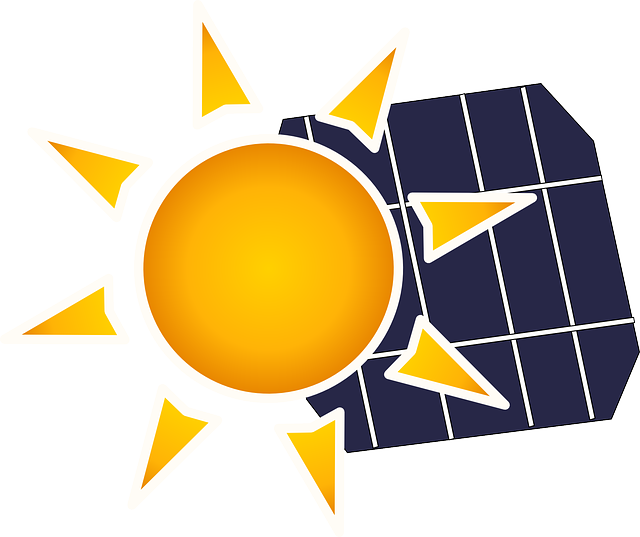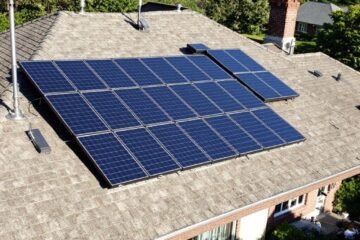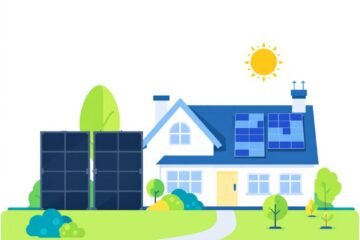EnergyForTheTaking.com is reader-supported. When you buy through links on our site, we may earn an affiliate commission.
If you’re looking for an eco-friendly and cost-effective way to keep your grocery items cold or frozen then you’ve come to the right place! A solar refrigerator is a fantastic solution for cutting down energy costs, as well as reducing your carbon footprint. Get ready to explore some of the questions associated with solar refrigeration in our article!
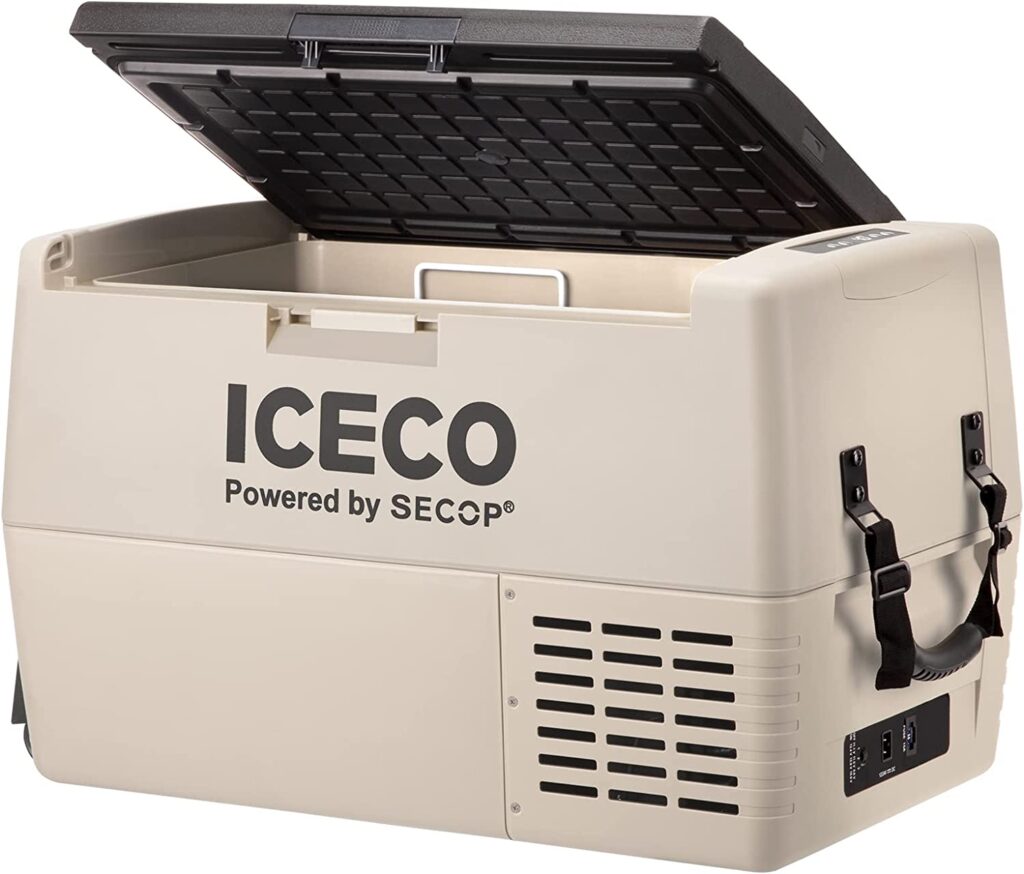
What is a Solar Refrigerator?
Also known as a solar powered cooler, is a type of refrigeration system that uses solar energy to power its cooling functions. Instead of using electricity from the grid, it harnesses the power of the sun to keep your food and drinks at the perfect temperature.
Benefits of Getting One
There are many benefits to using a solar powered cooler. For one, they are an eco-friendly alternative to traditional refrigeration systems, as they don’t rely on the grid’s electricity and they don’t produce harmful emissions. Additionally, solar refrigeration can save you money on your electricity bill and can even be used in off-grid or remote locations where traditional power sources are unavailable. With a solar refrigerator, you can enjoy all the convenience and comfort of a traditional fridge, without any of the environmental or financial downsides.
Can a refrigerator run on solar power?
The answer is yes! It can definitely be powered by solar energy. In fact, there are several brands on the market, such as Dometic and ICECO, that specialize in DC powered refrigerators. These refrigerators are designed to work off-grid and can be powered by a combination of solar panels (also known as photovoltaic cells or PV), and a battery.
Solar panels have revolutionized the way we use energy. Gone are the days when electricity from the grid was our only power source, as photovoltaic cells collect energy from the sun and convert it into usable electricity. With a rechargeable battery, the energy can be stored for later use, on dark or cloudy days, ensuring that the fridge runs no matter the weather conditions. Even better, a solar powered cooler can run off of direct current (DC) power – so there is no need for an AC inverter.
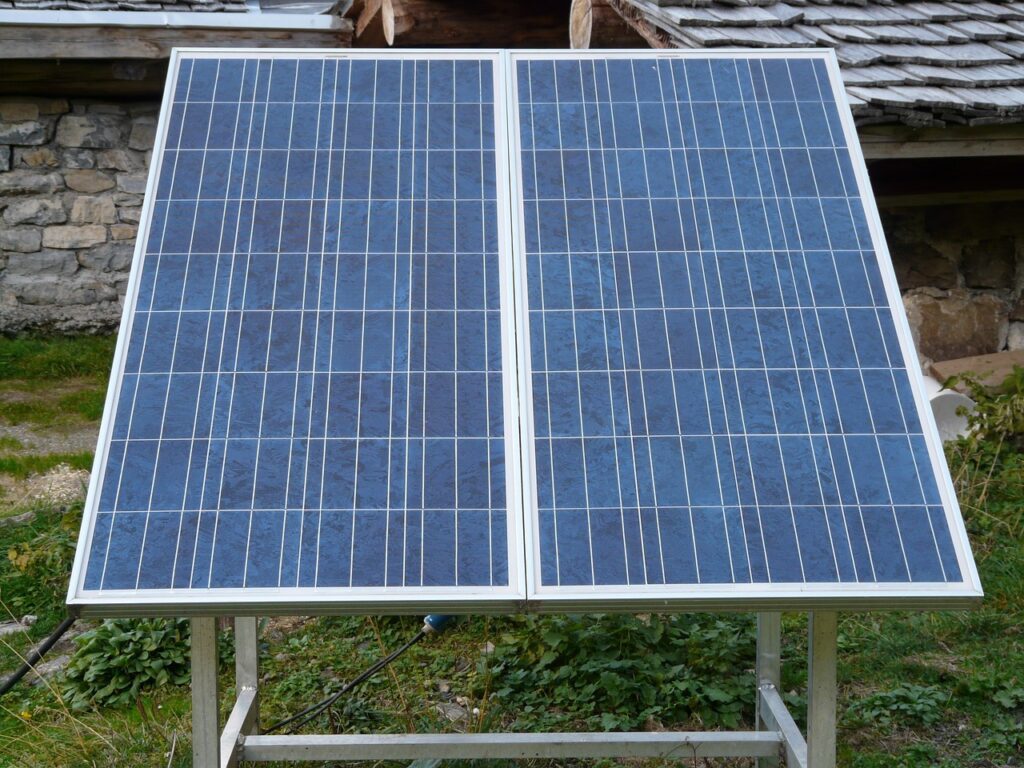
It’s essential to consider the size of your solar panel system and battery in relation to your refrigerator when you’re looking for an off-grid solution. You’ll want a stronger battery if you plan on using it frequently, as its lifespan greatly depends on how much you use it. Plus, if your goal is to take the fridge out camping or live completely off-the-grid, bigger panels and battery will help to ensure that your appliance can remain powered up for longer. Before investing in any power sources, make sure they support the power requirements you need. Investing in a larger capacity system often pays off because you don’t have to worry about whether or not your systems will be enough!
A solar refrigerator is a great way to go green and reduce your environmental footprint. It utilizes some of the latest technology in solar power solutions, which makes it an environmentally friendly alternative to traditional power sources. The installation of a solar refrigerator is relatively easy and can be done with minimal technical expertise, making it even easier for those looking to adopt a more self-sufficient lifestyle. Incorporating this type of renewable energy into your daily life not only serves as an efficient means of power but also allows you to enjoy the convenience of having a functioning refrigerator without relying on electricity from the grid. With some simple upfront investments, you could be on your way to embracing renewable energy solutions and enjoying all the benefits that come along with them.
How many solar panels does it take to run a refrigerator?
To figure out exactly how many you need, start by checking the wattage rating. A small 40 Quart refrigerator might run at 50 watts, while a larger 90 Quart might require 75 watts or more. You then need to calculate how much electricity those watts will draw from the battery bank over a given period. This measurement is known as amp-hours (Ah). For example, if your refrigerator uses 50 watts and runs for 24 hours per day, it draws 100 Ah per day (50 Watts x 24 Hours = 1200 Watt-hours / 12 Volts = 100 Amp-Hours).
Once you have determined how many amp-hours your refrigerator requires each day, multiply that number by 1.2 in order to factor in losses due to heat dissipation and other factors that reduce efficiency. In our example above, we would multiply 100 Ah x 1.2 = 120 Ah/day. That means in order for our 50-watt DC refrigerator to run reliably on solar power, we need at least 120 amp-hours of usable storage capacity in our battery bank – plus some extra capacity reserved in case of emergencies or extended cloudy days when the sun isn’t available as much as usual! So maybe you want to double or triple that! You have to decide what you are comfortable with.
Other Factors
The number of photovoltaic cells needed also depends on occupancy levels and appliance usage habits. If you are the only one using your refrigerator occasionally throughout the day, then one panel may be good enough, as it won’t be drawing as much power if it were opened more times by others throughout the day.
Location is also a major factor as different places around the globe get different amounts of peak sun hours. For example, Arizona might get 6.5 peak sun hours, but Pennsylvania might only get 3.6 peak sun hours.
If we go with a possible average of 5 peak sun hours, and our 120Ah battery to keep supplying energy to our solar powered cooler, we would need about 300 watts of solar (120Ah x 12V = 1440Wh, 1440Wh / 5hrs = 288W). 1x 300W solar panel or 3x 100W panels.
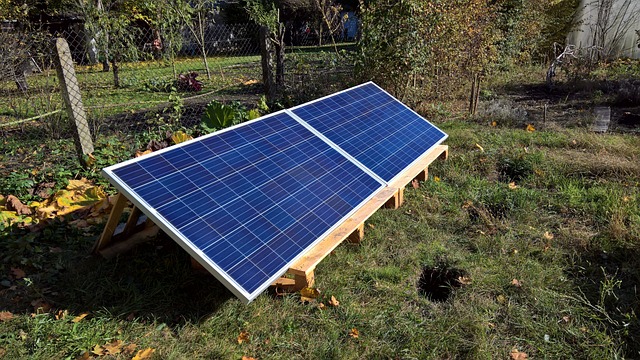
How long will a solar battery run a refrigerator?
The length of time the battery will last will be dependent on a few key factors. The size of your battery and its capacity for energy storage are majorly important; a larger battery will have more capacity and therefore, it’ll be able to keep your appliance running longer than a smaller one. Another crucially important factor is the power consumption of your refrigerator; if it’s in low-energy mode, you can expect it to make much more efficient use of solar energy. Last but not least, you should also bear in mind the amount of sunlight available – the more sunlight you have available to charge up that battery, the more juice for your fridge!
Based on these factors, estimates for how long a solar battery can run a refrigerator can vary. On average, like our previous example, a 120Ah solar battery can run a refrigerator for around 24 hours. However, this estimate can change depending on the specific power consumption of the refrigerator you choose, and the amount of sunlight available to charge the battery.
It’s worth noting that it is recommended to have a battery bank that is at least 3 times the size of your refrigerator’s power consumption in amp hours. This is because it consumes power during the night even when there is not any electricity being produced. If you run the battery bank too low, it will shorten the battery life.
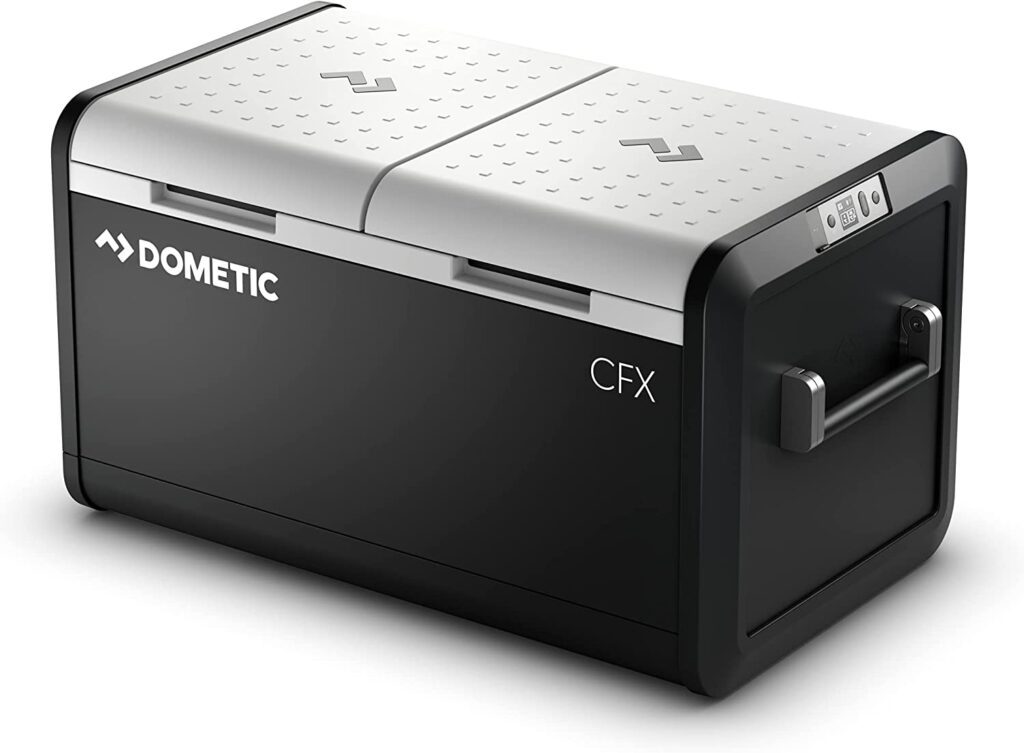
Solar Refrigerators on the Market
Solar refrigerators are becoming increasingly popular as more and more people are looking for sustainable and eco-friendly ways to keep their food fresh. There are many different brands and models available on the market, but two of the most highly recommended brands are ICECO and Dometic.
ICECO is known for its portable refrigerators that are designed to be energy-efficient and easy to use. They come with a variety of features such as dual-zone cooling and APP control for your phone.
Dometic, on the other hand, is known for its DC refrigerators that are perfect for off-grid living. They come with a variety of features such as energy-efficient cooling technology and the ability to withstand off-road traveling.
Both ICECO and Dometic have a wide range of refrigerators to choose from, so whether you’re looking for a compact mini fridge or a large refrigerator freezer, you’re sure to find something that fits your needs. Additionally, both brands have a solid reputation for quality and reliability, so you can trust that whichever model you choose, it will last for years to come.
ICECO Features
ICECO refrigerators are powered by Secop compressors, which are known for their stable performance. They come in different sizes and models, such as JP40, JP50, VL60, VL65, and VL74.
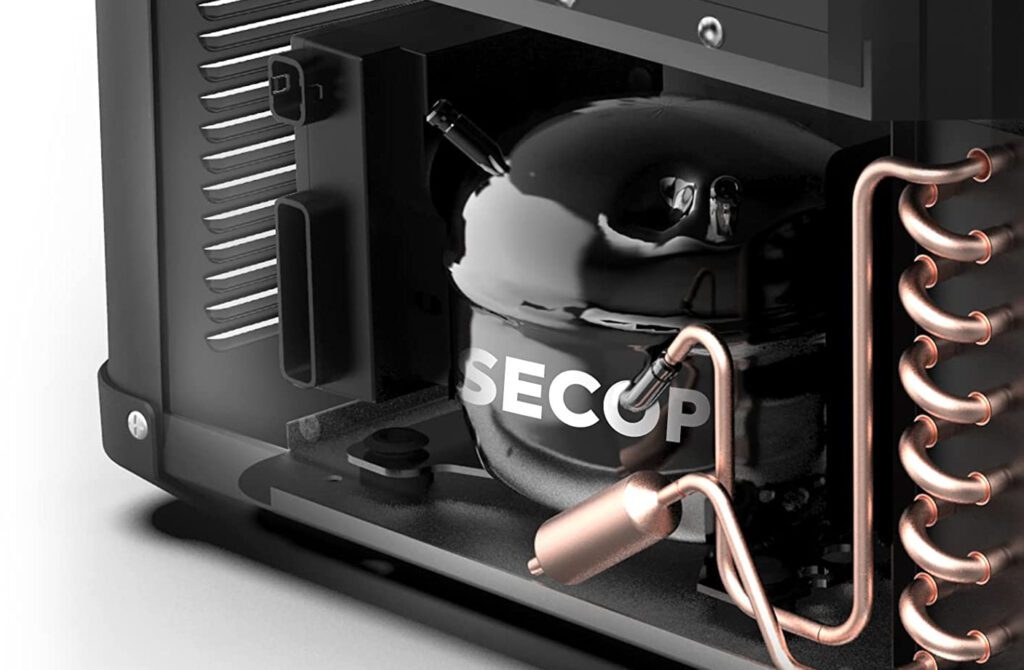
Some of the common features of ICECO refrigerators include:
- They can be used as 12v refrigerators or 12v freezers.
- They have 3-stage battery level protection.
- They come with removable back spring handles, removable baskets, and LED lights.
- They have an ACDC power socket.
- Some models allow you to open the lid from the front and back
- Some models offer dual-zone features, allowing for separate temperature control in different compartments.
- They have a MAX ECO mode, which can adjust the refrigeration efficiency of the compressor for fast cooling or energy saving. (For an example of energy saving, the ICECO JP40 has an estimated yearly energy cost of $21.20US as per the EnergyGuide label.
- They come with a warranty of 5 years on the compressor and 1 year on other parts.
- ICECO also offers a wide range of portable vehicle fridges and has over 104 technology patents and strong sustainable research and development. They also have a global partner network.
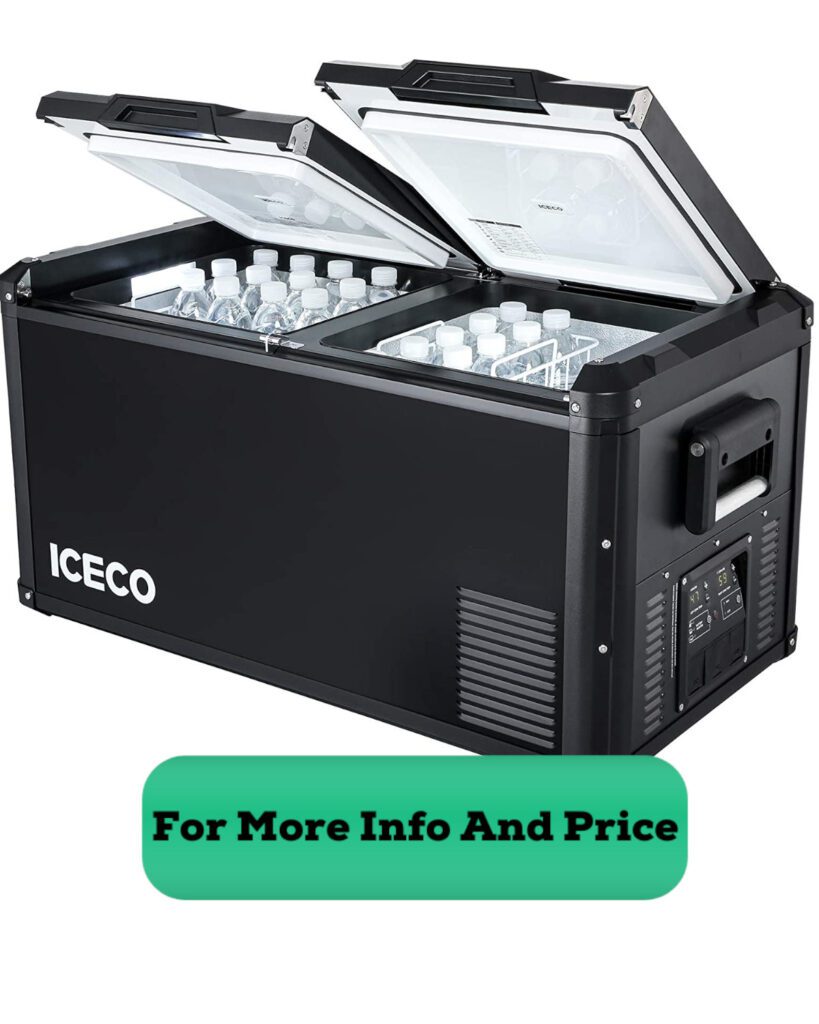
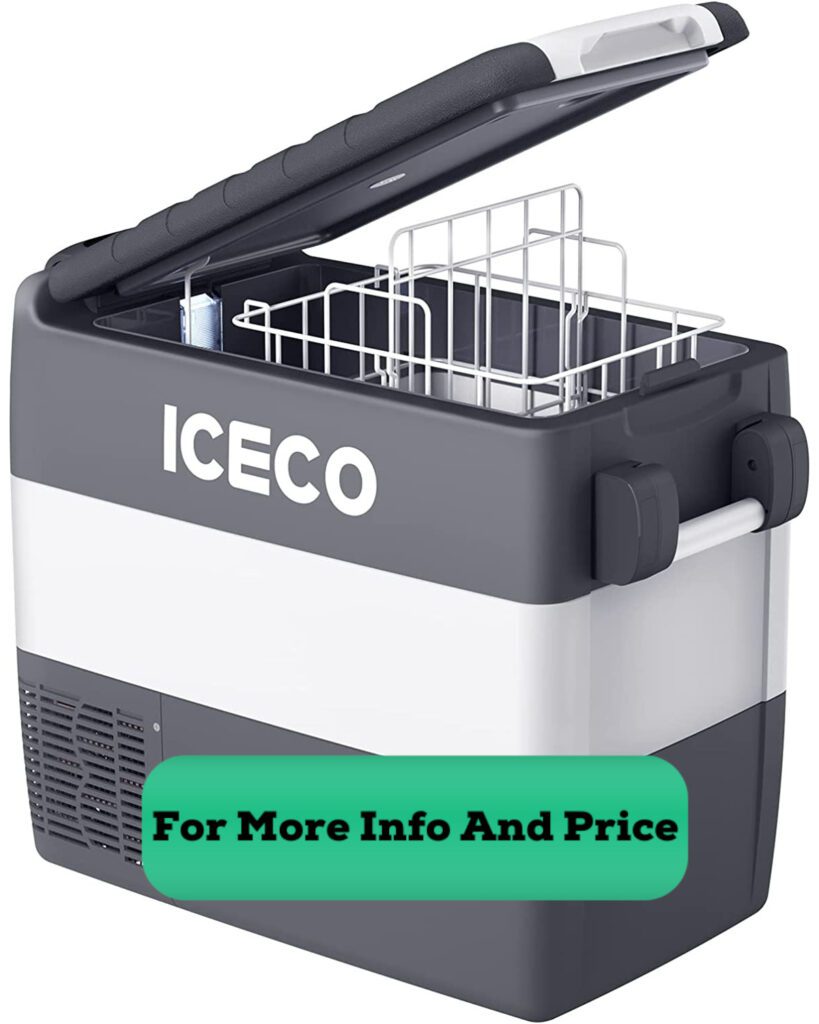
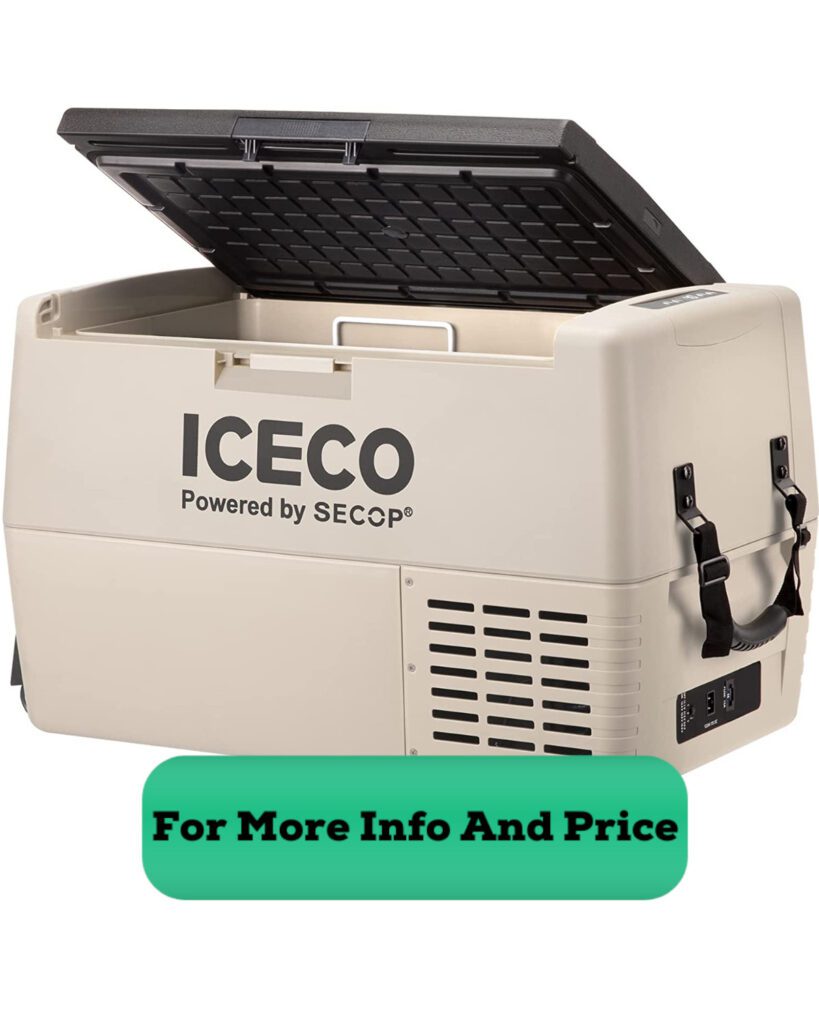
Dometic Features
Some of the common features of Dometic refrigerators include:
- Special features that ensure the refrigerator is safely and securely closed while driving in rough terrain
- Safety features that automatically switch over to using LP Gas for power when there is no longer any electricity available
- Glass shelves, clear door bins, dual crisper drawers, and overhead LED illumination
- Control with phone APP
- Easy-to-use digital controls that provide flexibility between performance and power consumption
- Compact and portable design
- Can be powered directly by 12-volt DC power
- Can refrigerate and deep freeze on the go
- Some models have separate fridge freezer compartments
- Some models can be powered by AC/DC or Solar
- Some models have a cooling range of -4℉~68℉
- Some models are suitable for use in semi-trucks, RV motorhomes, boats, and off-the-grid cabins
- Some models can be connected to 12/24V DC and 100-240V AC
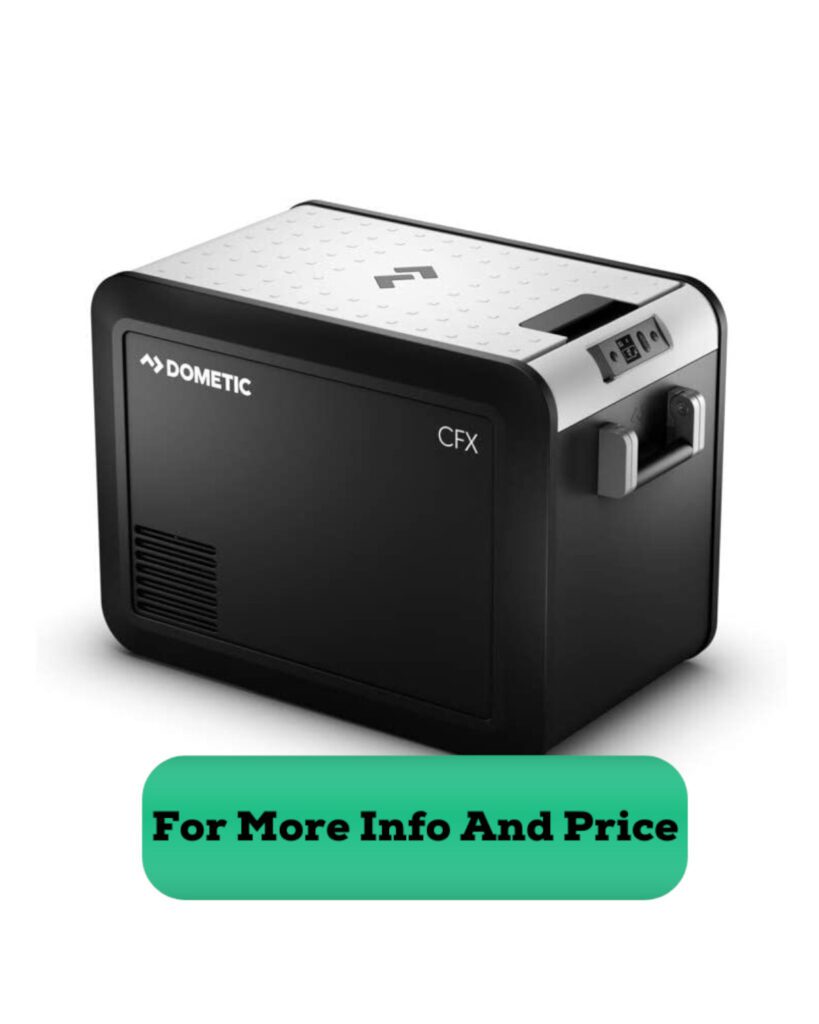

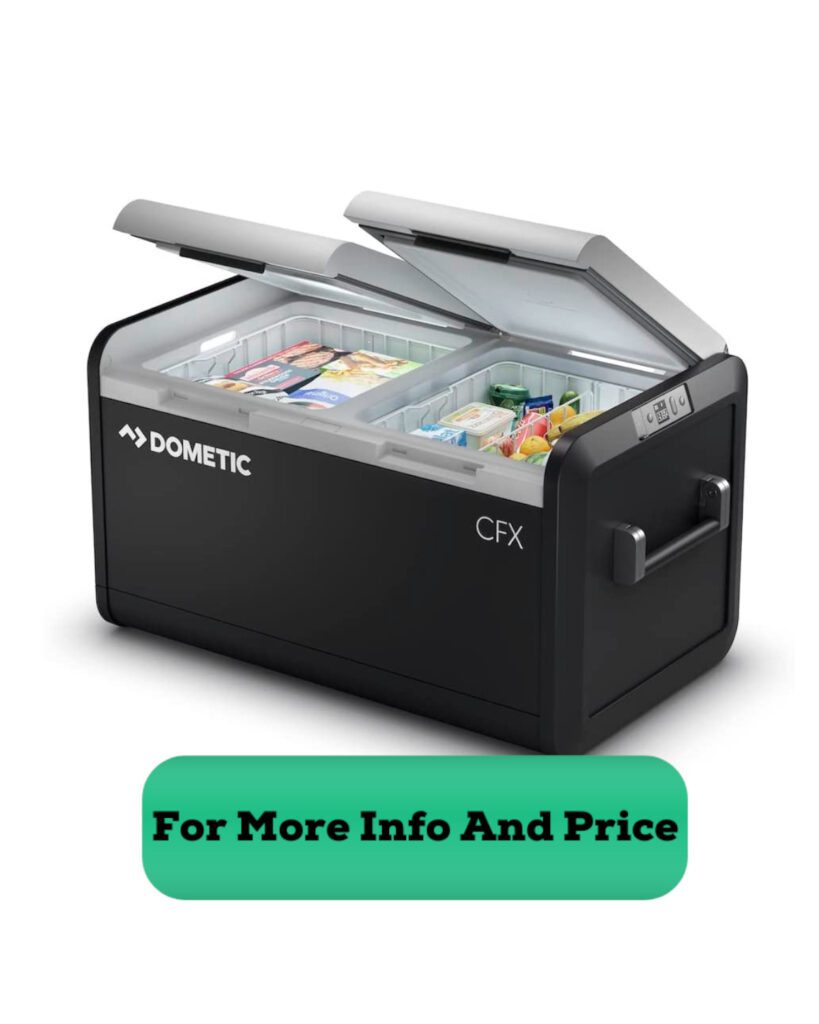
Will a 100W solar panel run a fridge?
A 100W solar panel might have all the potential in the world to run a refrigerator, but there are still some questions to answer before you can make that a reality. Factors like the size, energy efficiency, and the amount of sunlight it will get all play into determining how much power the solar panel can provide. It’s unlikely that it could keep up with a refrigerator more than its own capacity, so supplementing with larger panels or using multiple 100W panels might be necessary. On top of that, don’t forget about factors such as how well your solar fridge is insulated or what temperature it is outside at any given time – even those small details ultimately affect refrigeration consumption. If you’re feeling a bit overwhelmed by all this, why not get in touch with an expert? A qualified pro can help assess your individual needs and provide tailored advice for getting your fridge up and running on solar power.
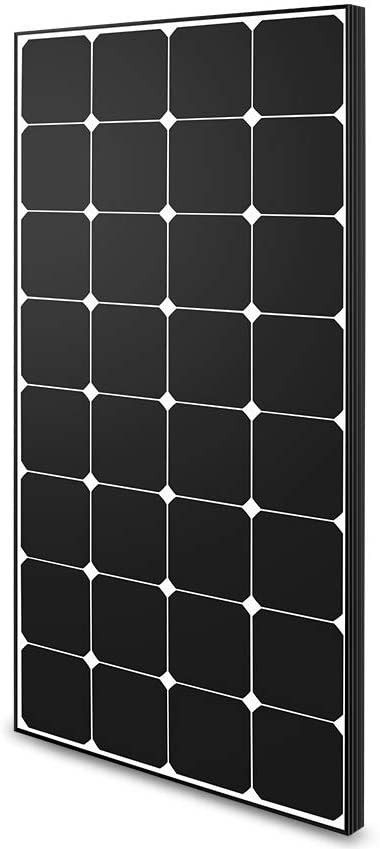
What size solar generator do I need for my refrigerator?
It is a portable device that uses solar panels to convert energy from the sun into electricity that can be used to power various devices and appliances. It typically consists of a charge controller, AC inverter, and a lithium battery, all in one unit. Here are some examples:
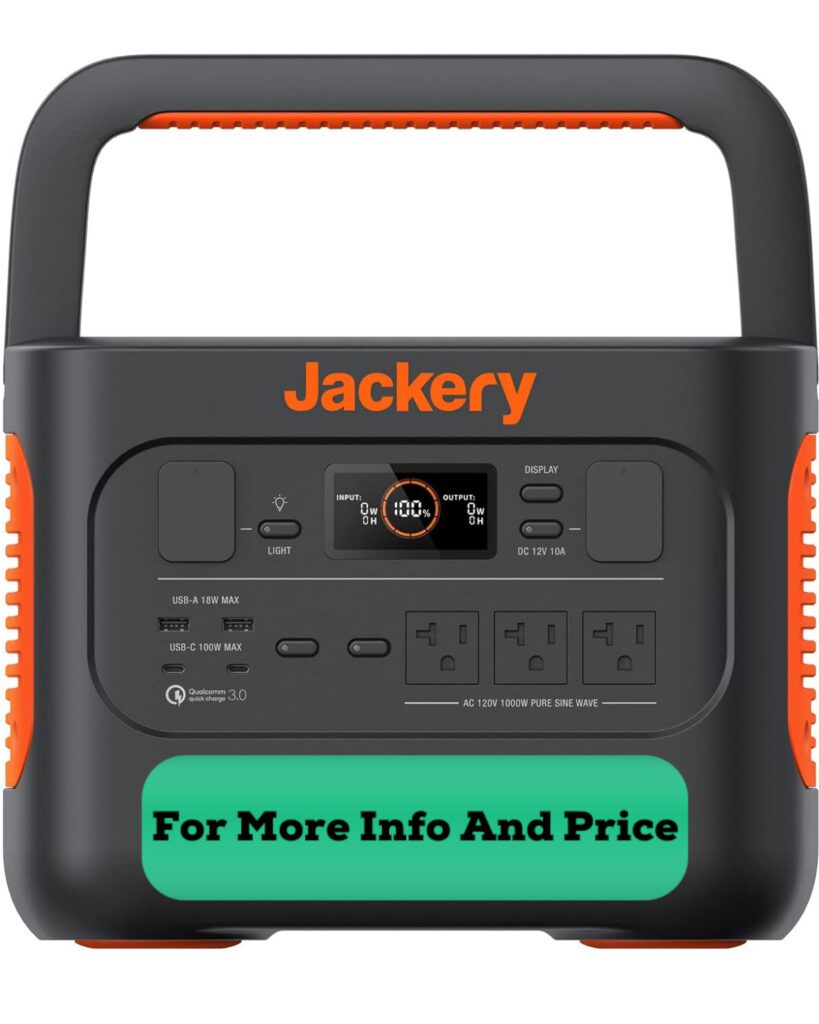
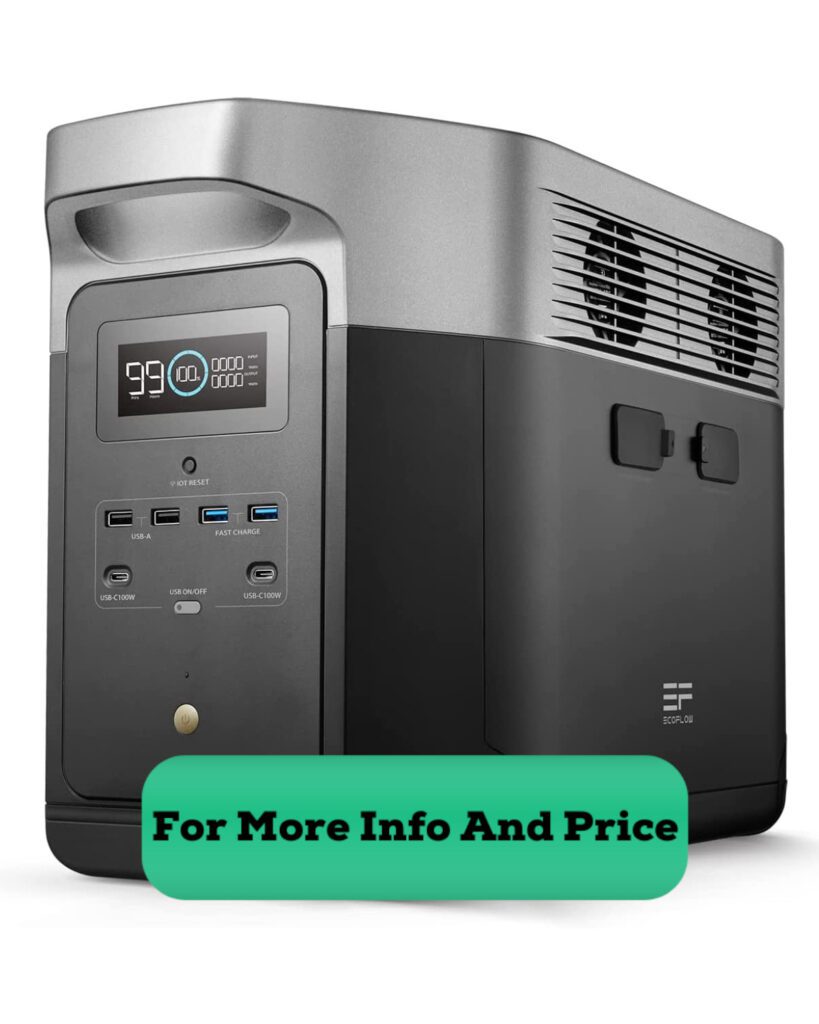
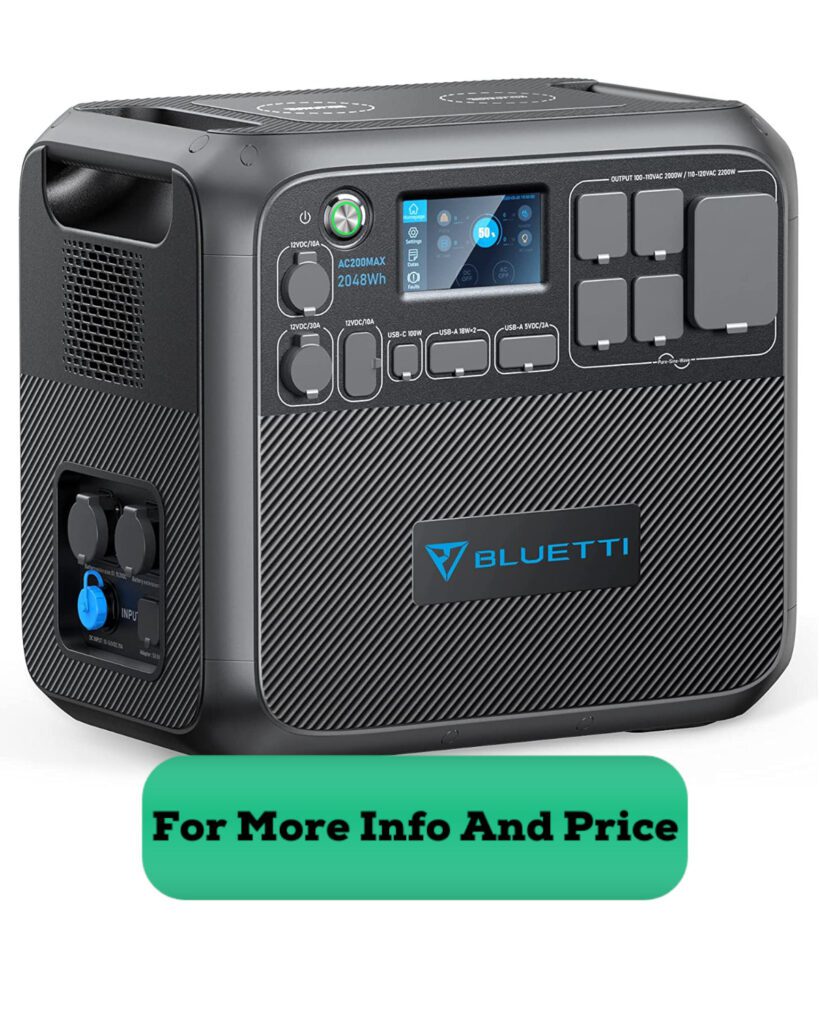
When it comes to powering a refrigerator with a solar generator, there are a few things to keep in mind. Firstly, you will want to take into account the size and energy demands of your refrigerator. An average AC home refrigerator uses anywhere from around 300-800 watts. But, for example, some ICECO models run at 50 watts. And remember, they don’t run constantly. The compressor kicks on every so often to keep it at the temperature you set, then shuts off. Additionally, you’ll want to think about how long you need the generator to run the refrigerator, as this will also affect the size you’ll need.
Determining the Size You Need
Take the wattage of the solar fridge and multiply it by how many hours you want to run it. For example, 50W x 24hr = 1200Wh
Then take the Wh and divide it by the voltage being used, in this case, 12V for solar. For example, 1200Wh / 12V = 100Ah
This Ah should be the minimum amp hours your battery should be to run the fridge for the length you specified prior, in this case, 24hr.
Will a 12V fridge drain my car battery while driving?
A solar powered cooler can be a great way to keep your food and drinks cold during those hot summer days, but you need to make sure you’re using it safely. Most of these fridges run on 12V power, which means that they can be connected to your car for power – but if you’re parking for an extended period of time, the fridge may start draining your car battery! To avoid this from happening, always make sure that your car is running if you are using the fridge – that way, it will get its power from the car’s alternator instead of the battery. Therefore, your fridge should never drain your car battery while you are driving.

Final Thoughts on a Solar Refrigerator
Going green has never been easier than with a solar refrigerator! Not only will you reduce your electrical consumption and save money, but you’ll be helping to reduce your carbon footprint. Imagine having a fridge powered completely by the sun’s energy. And the great news is that there are several solar generators available to suit your specific needs. So if you’re keen on lowering your energy bills and becoming more sustainable, then I highly encourage you to consider using a solar refrigerator as an alternative to conventional power sources. Doing so is sure to have positive impacts both environmentally and financially!
